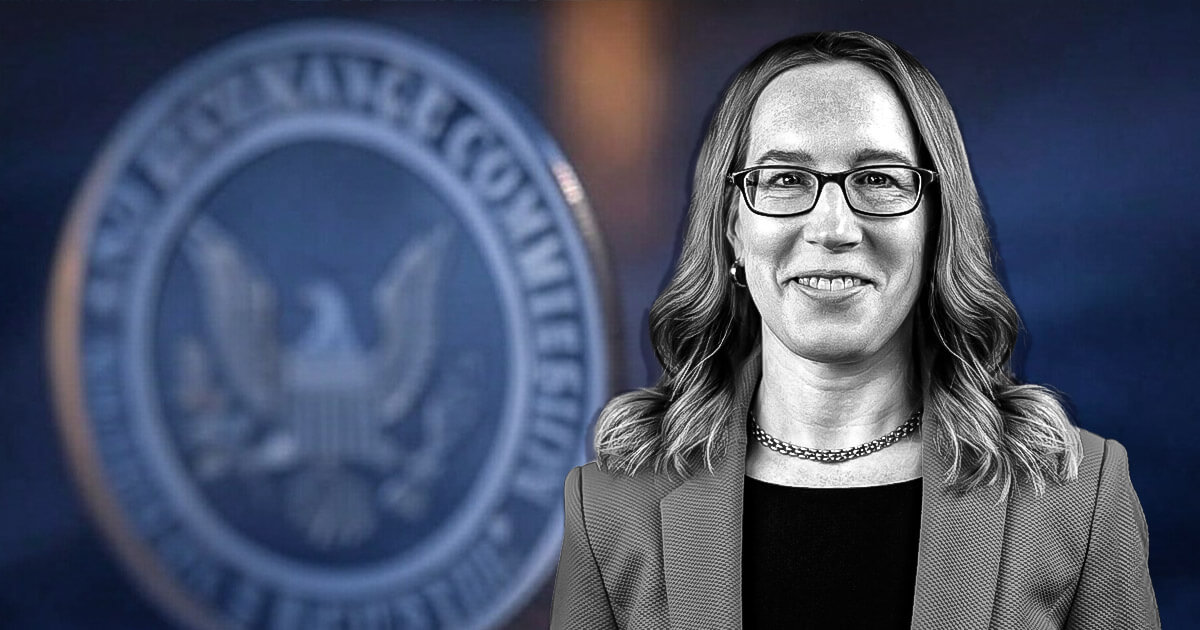SEC Commissioner Hester Peirce warned that layer-2 blockchains operating centralized matching engines may face exchange registration requirements while advocating for regulatory protection of truly decentralized protocols.
During an interview on The Gwart Show, Peirce noted her vision for crypto regulation, drawing sharp distinctions between immutable code operating on decentralized networks and centralized entities using blockchain technology to facilitate trading.
Decentralized protocols cannot be owned
The head of the SEC’s Crypto Task Force views protocols as sets of rules that cannot be owned, stating “nobody owns” a truly decentralized protocol because “it’s out there and anyone can use it.”
Layer-2 solutions introduce regulatory complexity, as they often centralize transaction ordering to address Maximum Extractable Value (MEV) issues.
These chains run matching engines that control transaction sequencing, departing from the distributed node architecture that defines traditional blockchain censorship resistance.
Pierce said:
“If you have a matching engine that’s controlled by one entity that controls all the pieces of that, then that looks a lot more like an exchange.”
She added that operators of such systems will have to consider that if they’re transacting, they’re matching securities transactions. However, the SEC wants to avoid forcing truly decentralized protocols to register as exchanges or broker-dealers.
Peirce noted the importance of protecting immutable smart contracts deployed on sufficiently decentralized layer-1 networks, describing them as “code just doing its thing out there” that “can’t register with us.”
Studying MEV
MEV solutions create this regulatory tension. While centralized sequencers often provide better retail execution by preventing front-running and sandwich attacks, they concentrate control over transaction ordering in ways that may trigger securities law obligations when handling tokenized securities.


The Crypto Investor Blueprint: A 5-Day Course On Bagholding, Insider Front-Runs, and Missing Alpha
Peirce acknowledged monitoring MEV but prefers letting the community develop solutions before intervening with regulation. She said:
“I don’t want us necessarily to jump in and solve the problems, the MEV, the issues around MEV that the community itself can solve.”
The distinction becomes critical as traditional securities migrate to blockchain infrastructure. Peirce wants clear boundaries protecting developers who “write code” from registration requirements while ensuring centralized intermediaries comply with existing frameworks.
This approach reflects Peirce’s broader regulatory philosophy of principles-based oversight that preserves innovation while maintaining investor protection.
She advocates for rules that distinguish between code operating autonomously and entities using code to perform regulated activities.
The commissioner’s framework suggests that truly decentralized protocols receive a regulatory safe harbor while layer-2 chains with centralized control mechanisms face traditional intermediary oversight.
This backdrop creates a spectrum where regulatory requirements correlate with centralization levels rather than technology type.
As tokenization of traditional securities accelerates, layer-2 operators must evaluate whether their centralized components trigger exchange registration obligations, particularly when processing securities transactions through controlled matching engines.


